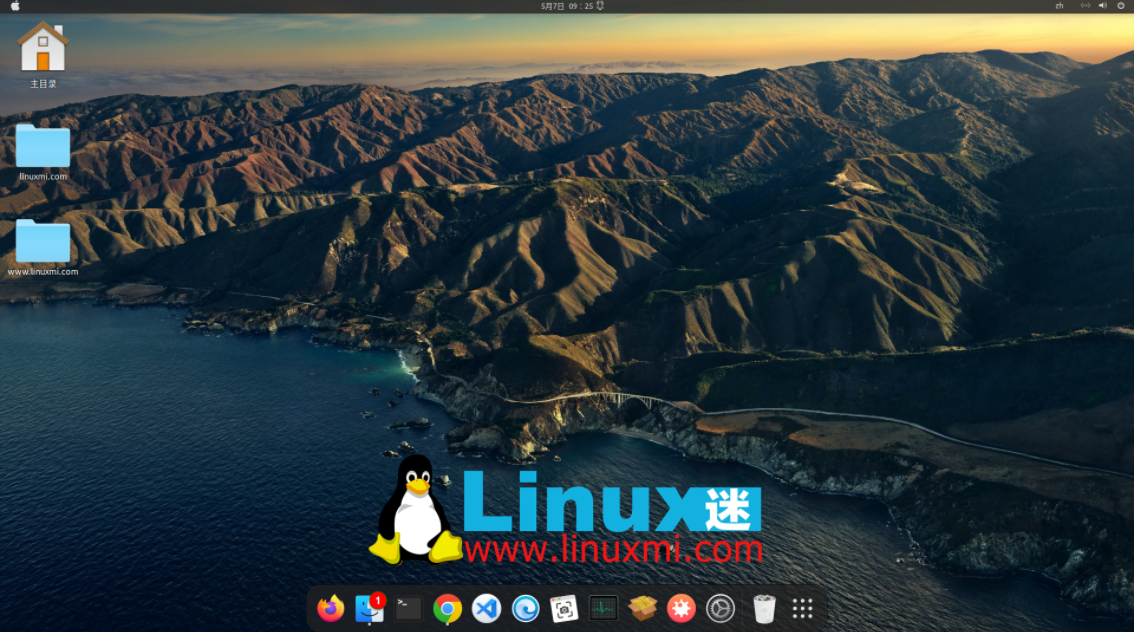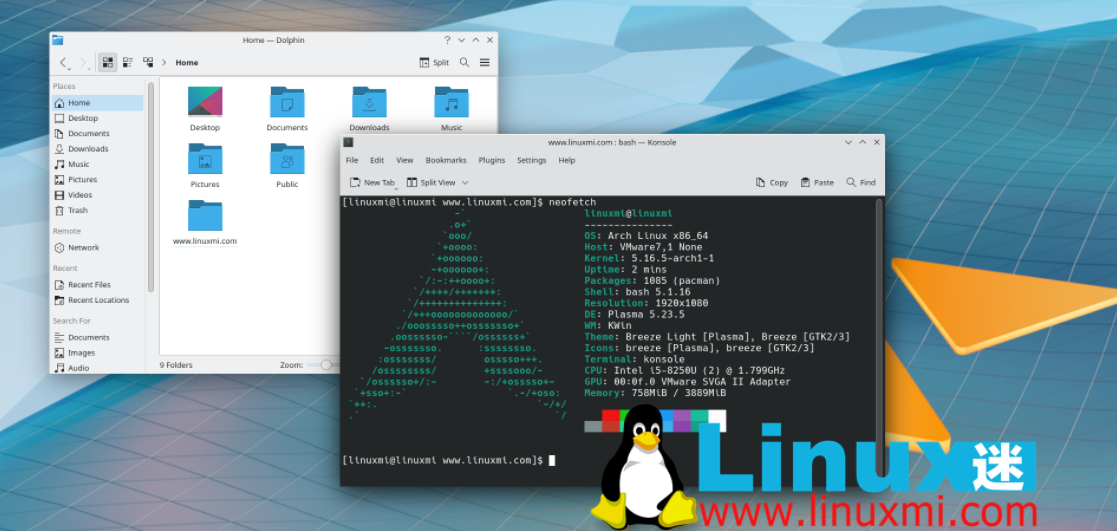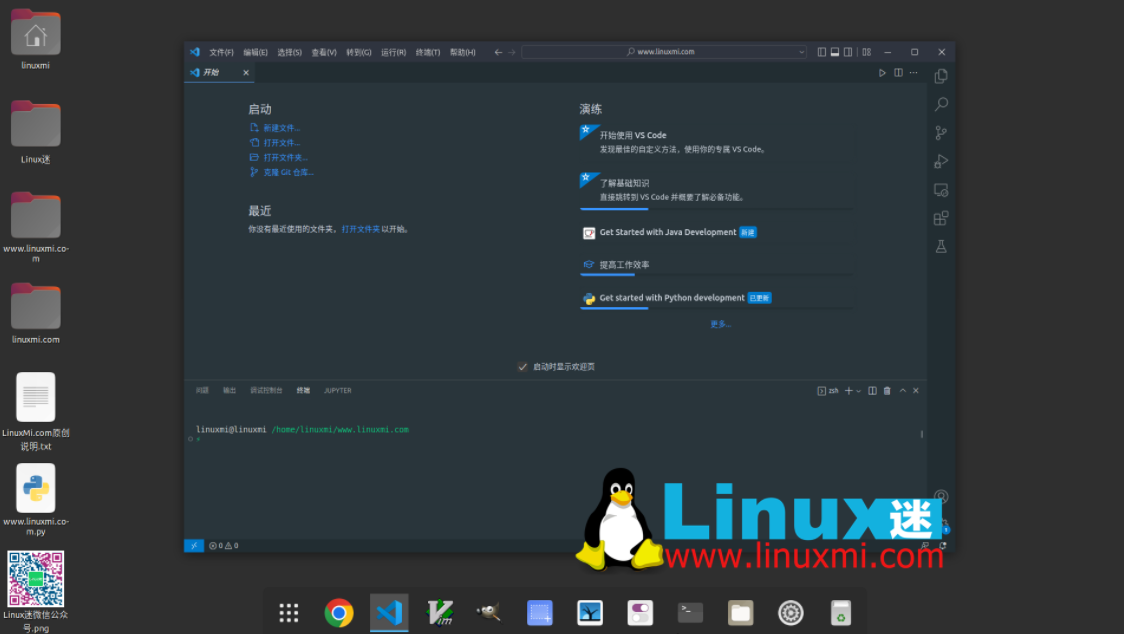 System Tutorial
System Tutorial
 LINUX
LINUX
 Six ways to get involved on Linux: How to contribute to the operating system you love
Six ways to get involved on Linux: How to contribute to the operating system you love
Six ways to get involved on Linux: How to contribute to the operating system you love
Although Linux is a great operating system, it may have some inconveniences when compared to Windows or macOS. Since Linux distributions are community-supported projects, your contributions are needed if you want them to get better.
Here are some ways you can improve the Linux ecosystem.
1. Use Linux
This may be obvious, but one of the best ways to improve Linux is to actually use it. You will experience firsthand its capabilities and areas for improvement. This means you'll know which bugs need fixing and which user interface elements need more fine-tuning.

Related:
Five things not to forget to do when installing Ubuntu https://www.linuxmi.com/ubuntu-install-your-pc.html
How to transform Ubuntu into beautiful macOS https://www.linuxmi.com/ubuntu-23-04-like-macos.html
2. Participate in Linux testing
If you're feeling adventurous or have a spare machine, you can also test upcoming Linux releases on your device. Even using a virtual machine is possible.
If you use Debian, you may want to switch from Debian Stable to Debian Testing. As shown below:

Using an up-to-date distribution like Arch Linux will allow you to catch problems faster without them making their way into the production distribution. This way you will be able to report bugs.
Related: How to switch from Debian stable version to Debian testing version https://www.linuxmi.com/debian-stable-testing.html
3. Report any bugs you find
If you encounter a problem with a Linux distribution or open source program, don't just complain on forums or social media. Take action. Use the error reporting mechanism provided by the developer to tell them what happened.

Most large open source projects, including Linux distributions, have some kind of bug tracking tool for tracking the progress of bugs. This is a refreshing thing about Linux compared to proprietary systems: they don't hide their flaws.
Recommendation: Complete guide to install Arch Linux using archinstall automation script https://www.linuxmi.com/archinstall-auto-arch-linux.html
4. Help other Linux users
Maybe you remember when you started using Linux. Things may seem confusing. Where should you go for help? How to accomplish this task in Linux? How to install Linux?

One of the great things about Linux is that it is a community, more so than other operating systems. This is why techies love Linux. There has always been grassroots support among users, from people using Linux helping each other. This includes face-to-face user groups, forums, and IRC channels.
If you have a problem, there's usually someone who knows how to fix it.
Recommended: Debian GNU/Linux 12 promises Windows 11 detection for dual-boot installations https://www.linuxmi.com/debian-gnu-linux-12-alpha2.html
5. Donate to Linux distribution
Even though Linux is free in price, its development still requires time and money. Funding for Linux and open source software comes from a variety of sources.
Some software is the result of research projects, the development of which is funded by universities. Other companies sponsor open source development. A good example is Red Hat, who develop Red Hat Enterprise Linux, and Canonical, the company behind Ubuntu.
However, many Linux distributions and other open source projects are like PBS shows: they are funded by viewers, or rather, by users like you. That means if you really care about them, you need to pay for them.
Many projects have donation pages where you can donate directly. Some of them also have product pages where you can purchase items to show your love for a particular item. You can use a coffee mug in the office or wear a t-shirt on the street.
6. Contribute to the Linux distribution
Even though it seems more professional these days, Linux still relies heavily on the contributions of volunteers. The Linux kernel, distributions, and other open source projects are the shining jewels of the free and open source software movement.

If you know how to code, you should seriously consider donating some of your efforts to your favorite distribution or other projects. If you have other skills, those may be in demand as well.
If you're good with words, software projects always require good documentation. You can try to improve the manual or wiki page. If you have a talent for art, you might consider contributing to the project's graphic design or volunteering to beautify its website.
Depending on your skills, you can contribute something of lasting value to Linux.
Related: How to turn VS Code into the ultimate Markdown editor https://www.linuxmi.com/vs-code-markdown.html
Improving Linux depends on everyone
Linux won’t improve on its own. You need to put in some effort, like writing code or testing a beta version of the distribution. There are many things you can contribute to Linux.
The above is the detailed content of Six ways to get involved on Linux: How to contribute to the operating system you love. For more information, please follow other related articles on the PHP Chinese website!

Hot AI Tools

Undresser.AI Undress
AI-powered app for creating realistic nude photos

AI Clothes Remover
Online AI tool for removing clothes from photos.

Undress AI Tool
Undress images for free

Clothoff.io
AI clothes remover

Video Face Swap
Swap faces in any video effortlessly with our completely free AI face swap tool!

Hot Article

Hot Tools

Notepad++7.3.1
Easy-to-use and free code editor

SublimeText3 Chinese version
Chinese version, very easy to use

Zend Studio 13.0.1
Powerful PHP integrated development environment

Dreamweaver CS6
Visual web development tools

SublimeText3 Mac version
God-level code editing software (SublimeText3)

Hot Topics
 1662
1662
 14
14
 1418
1418
 52
52
 1311
1311
 25
25
 1261
1261
 29
29
 1234
1234
 24
24
 Linux Architecture: Unveiling the 5 Basic Components
Apr 20, 2025 am 12:04 AM
Linux Architecture: Unveiling the 5 Basic Components
Apr 20, 2025 am 12:04 AM
The five basic components of the Linux system are: 1. Kernel, 2. System library, 3. System utilities, 4. Graphical user interface, 5. Applications. The kernel manages hardware resources, the system library provides precompiled functions, system utilities are used for system management, the GUI provides visual interaction, and applications use these components to implement functions.
 How to check the warehouse address of git
Apr 17, 2025 pm 01:54 PM
How to check the warehouse address of git
Apr 17, 2025 pm 01:54 PM
To view the Git repository address, perform the following steps: 1. Open the command line and navigate to the repository directory; 2. Run the "git remote -v" command; 3. View the repository name in the output and its corresponding address.
 vscode Previous Next Shortcut Key
Apr 15, 2025 pm 10:51 PM
vscode Previous Next Shortcut Key
Apr 15, 2025 pm 10:51 PM
VS Code One-step/Next step shortcut key usage: One-step (backward): Windows/Linux: Ctrl ←; macOS: Cmd ←Next step (forward): Windows/Linux: Ctrl →; macOS: Cmd →
 What is the main purpose of Linux?
Apr 16, 2025 am 12:19 AM
What is the main purpose of Linux?
Apr 16, 2025 am 12:19 AM
The main uses of Linux include: 1. Server operating system, 2. Embedded system, 3. Desktop operating system, 4. Development and testing environment. Linux excels in these areas, providing stability, security and efficient development tools.
 How to run sublime after writing the code
Apr 16, 2025 am 08:51 AM
How to run sublime after writing the code
Apr 16, 2025 am 08:51 AM
There are six ways to run code in Sublime: through hotkeys, menus, build systems, command lines, set default build systems, and custom build commands, and run individual files/projects by right-clicking on projects/files. The build system availability depends on the installation of Sublime Text.
 How to run java code in notepad
Apr 16, 2025 pm 07:39 PM
How to run java code in notepad
Apr 16, 2025 pm 07:39 PM
Although Notepad cannot run Java code directly, it can be achieved by using other tools: using the command line compiler (javac) to generate a bytecode file (filename.class). Use the Java interpreter (java) to interpret bytecode, execute the code, and output the result.
 laravel installation code
Apr 18, 2025 pm 12:30 PM
laravel installation code
Apr 18, 2025 pm 12:30 PM
To install Laravel, follow these steps in sequence: Install Composer (for macOS/Linux and Windows) Install Laravel Installer Create a new project Start Service Access Application (URL: http://127.0.0.1:8000) Set up the database connection (if required)
 How to use VSCode
Apr 15, 2025 pm 11:21 PM
How to use VSCode
Apr 15, 2025 pm 11:21 PM
Visual Studio Code (VSCode) is a cross-platform, open source and free code editor developed by Microsoft. It is known for its lightweight, scalability and support for a wide range of programming languages. To install VSCode, please visit the official website to download and run the installer. When using VSCode, you can create new projects, edit code, debug code, navigate projects, expand VSCode, and manage settings. VSCode is available for Windows, macOS, and Linux, supports multiple programming languages and provides various extensions through Marketplace. Its advantages include lightweight, scalability, extensive language support, rich features and version



